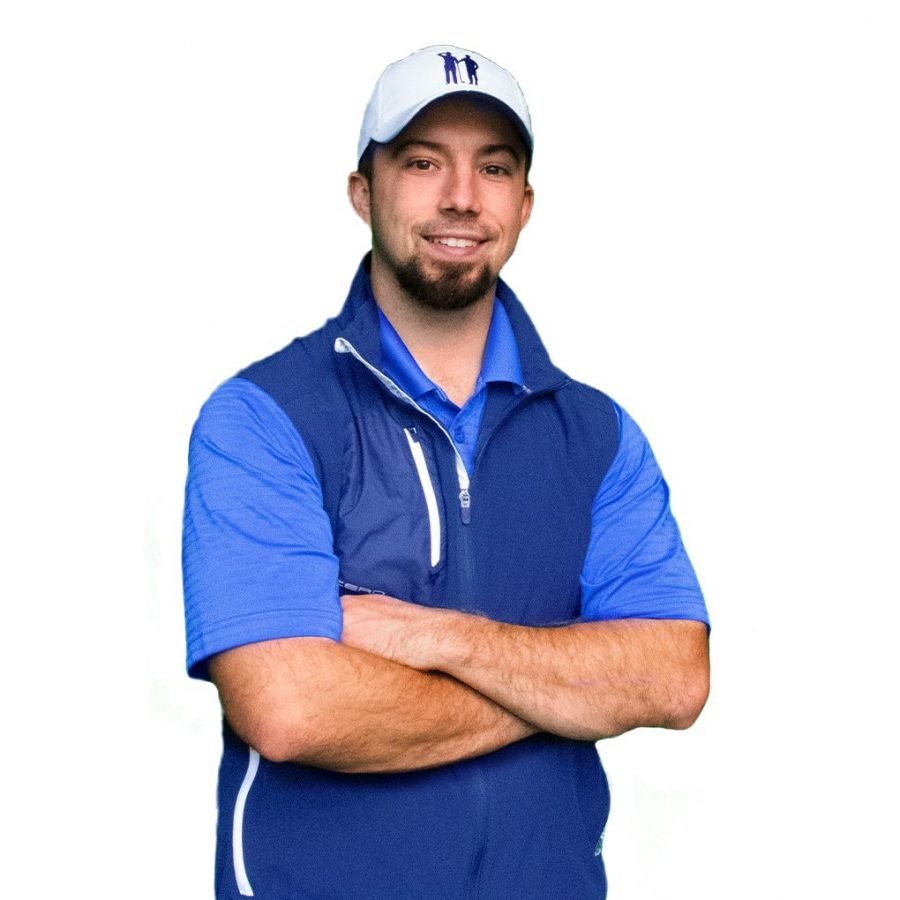Face Angle at Impact: The #1 Cause of Directional Misses
The Face Controls the Flight
Most golfers think their slice, hook, or push comes from swinging over the top or dropping too far inside. But if you really want to understand your ball flight, you need to look at one thing first: your clubface at impact.
The face angle—not the path—is what determines the majority of your ball’s starting direction. In fact, launch monitors show that the face controls between 75% and 95% of where your shot starts.
In this article, we’ll break down what face angle is, why it matters so much, and how to take control of it to stop missing left or right.
1. What Is Face Angle (and Why It Matters Most)
Defining Face Angle
Face angle is the direction your clubface is pointing—either left (closed), right (open), or square to the target—at the moment of impact. It’s measured in degrees and can be positive (open), negative (closed), or zero (square). Even small differences in face angle can make a huge difference in ball direction.
For example, a face angle of +3° (3 degrees open to the target) will cause your shot to launch right. If your swing path is neutral, that shot likely stays right—or curves even farther right depending on the face-to-path relationship.
Ball Flight Laws: Why Face Angle Rules Direction
Launch monitor data has made one thing clear: face angle dominates ball start direction.
With irons, around 75–85% of the start line is determined by where the face is pointing at impact. With a driver—because of less friction and lower spin loft—it’s even more extreme: 90–95% of direction comes from the face.
Let’s look at two examples:
- Example 1: Clubface +3°, Path 0° → The ball starts right and stays there or fades more.
- Example 2: Clubface 0°, Path -5° → The ball starts near the target but curves left due to the face-to-path being 5° closed.
In both cases, the start line is dictated by face angle—not swing path. That’s why correcting path alone often doesn’t fix directional misses.

2. How to Measure Face Angle Accurately
Using a Launch Monitor (TrackMan, GCQuad, Mevo+)
The most accurate way to understand your face angle is by using a launch monitor. Devices like TrackMan, GCQuad, or Mevo+ measure the clubface’s orientation at the moment of impact in degrees relative to the target line. This tells you whether the face was square, open, or closed—and by how much.
But the real value comes when you combine face angle with club path. This creates a “face-to-path” number, which tells you if the face was open or closed relative to your swing direction. That’s what actually causes the ball to curve. For example:
- Face +2°, Path 0° → push
- Face +2°, Path -4° → slice (face is open to path)
- Face +2°, Path +4° → baby fade or straight shot (neutral face-to-path)
Even without perfect swing mechanics, if you can control this number, you can hit reliable draws or fades.
Signs You Have a Face Angle Issue (Without Tech)
If you don’t have access to a launch monitor, you can still diagnose a face angle issue by watching your ball’s start line.
- Shots that consistently start right mean your face is likely open at impact.
- Shots that start left usually point to a closed face.
- If your start line is good but the ball curves a lot, your face-to-path is off.
- If you’ve worked on fixing your path but still miss left or right, it’s almost always a face issue.
One simple way to train this on the range is to place an alignment stick down aimed at your target. Watch where the ball starts in relation to the stick—this gives you instant feedback on your clubface control.
3. Why You Struggle to Control Face Angle
Grip and Wrist Angles
The biggest influence on face angle—especially for amateurs—is your grip. A grip that’s too weak often leaves the face open at impact, while a grip that’s too strong can shut the face early. The key is finding a grip that lets you square the face naturally without needing extreme hand action through the ball.
Wrist angles also play a major role. If your lead wrist is cupped (extended) in the downswing, the clubface tends to be open. If your lead wrist is flat or slightly bowed (flexed), it helps square or even close the face early. Many pros work hard on controlling this flexion in transition because it has a direct impact on face angle.
Poor Clubface Awareness
Most golfers struggle to feel where the clubface is pointing during the swing. Without this awareness, it’s nearly impossible to make adjustments mid-swing. Players who consistently start the ball on their intended line usually have trained face awareness through reps and feedback drills.
One way to start developing this feel is by hitting short shots where you intentionally try to start the ball left, straight, or right. This builds a connection between feel and face control.
Clubface Twisting at Impact (Gear Effect)
Even if your swing is solid, a mishit can ruin your face angle. Shots struck on the toe tend to twist the face closed, while heel strikes twist it open. This is due to gear effect, which becomes especially noticeable on drivers.
The solution? Consistently find the center of the face. A great way to monitor this is by spraying the face with foot powder or using impact tape. The more centered your strike, the more reliable your face angle—and ball direction—will be.
4. How to Train Clubface Control
Grip Check: Set the Foundation
If your grip is off, your clubface control will always be inconsistent. Start by making sure your lead hand shows 2–2.5 knuckles at address and that your trail hand supports the grip from underneath rather than over the top. This promotes a neutral face that doesn’t require excessive manipulation through the ball.
A simple checkpoint drill: take your grip, set the clubface square, and rehearse taking it halfway back. Check in a mirror or with video—if the face matches your spine angle, you’re in a great spot.
Wrist Angle Drills (Flexion and Extension)
Lead wrist flexion is one of the most reliable ways to close the clubface earlier in the downswing. To train it, start with slow-motion half swings while keeping your lead wrist flat or slightly bowed through impact.
If you have access to HackMotion or similar wrist sensors, you can track this in real time. Without tech, exaggerate the “bowed” lead wrist in small chip shots and notice how much more left the ball starts compared to a cupped wrist.
Short Swing Face Control Drill
Face awareness starts with intent. Hit 30–50 yard wedge shots and deliberately try to start the ball:
- Left of the target
- Right of the target
- Dead straight
Keep the same path—only adjust your face angle. This drill teaches you how the clubface feels in your hands and wrists. The more you do it, the more you’ll develop the ability to manipulate your start line on demand.
5. Real-World Fixes Based on Shot Shape
Pushes or Blocks
If your shots consistently start right and stay right, your clubface is too open at impact. This is often paired with a square or slightly in-to-out path, making the shot feel solid but offline.
Fixes:
- Strengthen your grip slightly (rotate both hands clockwise on the grip).
- Focus on flexing your lead wrist during the downswing.
- Try slowing your hands through impact to keep the face from hanging open.
Pulls or Straight Pulls
A straight pull means the face is closed to the target but matched to your path. Often caused by handsy swings or over-rotated forearms.
Fixes:
- Lighten your grip pressure to allow a more natural release.
- Practice passive hands in transition—avoid rolling the forearms too early.
- Check that your lead wrist isn’t overly bowed or that your grip isn’t too strong.
Slice (Push-Fade or Push-Slice)
The dreaded slice happens when your face is open relative to the path—usually with an out-to-in swing direction. The ball starts right and curves farther right.
Fixes:
- Strengthen the grip to help square the face.
- Train lead wrist flexion earlier in the downswing.
- Combine face work with shallow path drills like pump-to-impact or the glove-under-arm swing.
Conclusion: Start Controlling Your Start Line
If you’re missing your target and struggling to find consistency, the first place to look is your clubface at impact.
Face angle controls the majority of your ball’s starting direction—and even a few degrees open or closed can mean the difference between a perfect shot and a costly miss.
The good news? You can train this.
Whether it’s your grip, your wrist angles, or your awareness of face position in the swing, mastering face angle gives you real command over where your shots begin—and where they end up.
Golf Practice Plan – What to Do & Not To Do
Wonder why you’re not getting better as fast as you want to be? Here’s your proven system to follow step by step that hundreds of golfers like you are following each month. Our students send us emails frequently praising these practice plans and how much they’ve improved at golf.
Get access to our Practice Plans built for all 3 skill levels (Beginners, Intermediate, and Advanced Golfers).
You’ll learn what to do at the golf course to improve your score and skills and what not to do. Just follow these plans step by step. It’s made easy for you. Plus see our videos, worksheets, and training aid recommendations.
Thanks for reading today’s article!
Nick Foy – Golf Instructor

